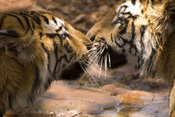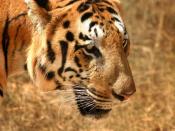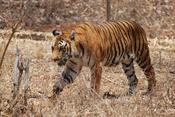Wildlife Conservation Introduction Favoured with a unique geographical location and varied landforms, India is home to about one third of known life forms in the world. There are over 500 species of mammals and 2060 species of birds that are truly Indian.
Rapid growth of human and livestock population since the turn of the century and the consequent pressure on land due to development have taken an increasingly heavy toll on the country wilderness. One of the major threats facing wildlife is the destruction of its habitat through human development activities: agriculture, urban settlements, roads, dams and mines, have all contributed to the loss of habitat. Another problem is the fragmentation of the ecosystem into parcels too small for wildlife to use. In recent years illegal trade in ivory, horns, hides, feathers and organs has brought many species to the verge of extinction. This century alone India has seen the extinction of many species, among them the hunting leopard (cheetah) and the white winged wood duck.
The numerous threats facing our wildlife have created awareness for the urgent need for conservation. It has become clear by now that wildlife is an important biological, economic and recreational resource that has to be maintained through careful management. Conservation in this context is understood as a philosophy and policy of managing the human use of environment so that it may meet the needs and aspirations of present and future generations. One of the basic principles of wildlife conservation involves providing adequate natural food and shelter to maintain population of each species in a given habitat. For this purpose the government has created and developed national parks and sanctuaries where threatened species can be preserved. Other conservation measures involve research and studies of wild animals and their habitat, their biological requirements, census operations, improvement...


